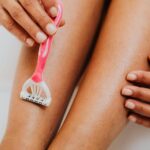
Diamonds have been cherished across cultures for centuries. They symbolize power, beauty, and status, with deep cultural significance in weddings, royal regalia, and spiritual practices. However, as technology advances, a new player has emerged on the diamond stage—lab-grown diamonds, or man-made diamonds. These gems are identical to natural diamonds in every way except their origin. While they are embraced for their eco-friendly and ethical aspects, how do they fit into different cultural perspectives? Let’s explore how lab grown diamonds and cultures are impacting traditions and reshaping cultural views on luxury, ethics, and symbolism.
The Cultural Importance of Diamonds
From Africa to India, diamonds have historically played a central role in various cultures. In Indian culture, diamonds are believed to bring prosperity and ward off evil, making them popular in wedding ceremonies and religious rituals. Similarly, diamonds have been used in royal crowns, swords, and artifacts, signifying power and sovereignty in Europe and Asia.
In Western societies, diamonds, particularly engagement rings, have come to symbolize eternal love and commitment, largely due to successful marketing campaigns like De Beers’ famous “A Diamond is Forever” slogan.
Lab-Grown Diamonds: A Modern Innovation with Deep Roots
Lab-grown diamonds have shaken up the traditional diamond industry. Created through advanced technological processes like High Pressure High Temperature (HPHT) or Chemical Vapor Deposition (CVD), these diamonds are virtually indistinguishable from mined diamonds. What sets them apart is their origin, price, and ethical footprint.
Man-made diamonds hold the potential to align with evolving cultural values that emphasize sustainability, ethical sourcing, and reduced environmental impact. This transition has sparked a cultural debate—can lab-grown diamonds uphold the same prestige, symbolism, and significance as their naturally mined counterparts?
Lab-Grown Diamonds in Indian Culture
In India, where diamonds have held spiritual and traditional importance for centuries, the introduction of lab-grown diamonds represents both a challenge and an opportunity. While some traditionalists may hesitate to embrace synthetic gems, younger generations are increasingly drawn to lab-grown diamonds because of their affordability and eco-friendliness. Moreover, in a culture where the ethics of gem sourcing are becoming more important, lab-grown diamonds offer a solution to concerns about blood diamonds and environmental degradation.
Indian weddings, famous for their grandeur and elaborate jewelry, are slowly adapting to this shift. Man-made diamonds provide the aesthetic brilliance desired in wedding jewelry, while also catering to modern ethical concerns. As sustainability becomes a focus for many couples, lab-grown diamonds are finding their way into bridal sets and family heirlooms.
Western Cultures and the Shifting Perception of Lab-Grown Diamonds
In Western cultures, where diamonds symbolize eternal love, lab-grown diamonds have gained significant traction. Many couples now prefer man-made diamonds for engagement rings, as these stones offer a guilt-free alternative to traditionally mined diamonds.
For environmentally conscious consumers, lab-grown diamonds symbolize not just beauty but also responsibility. The younger generations in the West, particularly millennials and Gen Z, are more concerned with the environmental and ethical ramifications of their purchases. These consumers view lab-grown diamonds as a way to enjoy luxury without contributing to environmental harm or unethical labor practices, which makes them more appealing than mined diamonds.
Asian Markets: Tradition Meets Innovation
In many parts of Asia, diamonds are synonymous with wealth and prestige. While natural diamonds remain a status symbol, lab-grown diamonds are gradually finding acceptance, particularly among younger consumers. As the lab-grown diamond industry continues to grow, it’s clear that Asian consumers are starting to see the value in ethical and sustainable luxury.
China, a key player in the global diamond market, has seen a rising demand for lab-grown diamonds. With a growing middle class and increasing concern for environmental sustainability, Chinese consumers are drawn to the ethical appeal and lower price point of lab-grown diamonds. While natural diamonds still dominate the high-end market, man-made diamonds are carving out their own niche.
The Ethical Appeal of Man-Made Diamonds Across Cultures
One of the biggest advantages of lab-grown diamonds is their ethical production. Mined diamonds have long been associated with human rights abuses, environmental destruction, and the funding of conflict—particularly in Africa. The term “blood diamonds” or “conflict diamonds” refers to diamonds mined in war zones and sold to finance armed conflict against governments.
Lab-grown diamonds, on the other hand, are free from these concerns. They offer a clear conscience for buyers who want to enjoy the luxury and beauty of a diamond without supporting unethical practices. As a result, cultures that value fairness, social justice, and environmental stewardship are more likely to embrace man-made diamonds.
Religious and Spiritual Perspectives on Lab-Grown Diamonds
In cultures where diamonds hold spiritual significance, such as in Hinduism and Buddhism, the rise of lab-grown diamonds presents an interesting dilemma. Traditionally, natural diamonds were thought to have spiritual properties, with some even believed to bring luck or healing. While lab-grown diamonds may not carry the same spiritual connotations for some, they still embody the same physical beauty and durability, allowing them to play a similar role in religious and spiritual practices.
In some cultures, the debate arises as to whether a lab-grown diamond can offer the same spiritual benefits as a natural one. However, as awareness of the ethical and environmental implications of mined diamonds grows, spiritual leaders may increasingly promote lab-grown diamonds as an alternative that aligns better with values of sustainability and non-violence.
The Role of Lab-Grown Diamonds in Modern Rituals and Celebrations
As cultures around the world evolve, so do their traditions. While mined diamonds have been the default choice for significant life events like engagements, weddings, and anniversaries, lab-grown diamonds are now being used in these ceremonies as well. The flexibility and affordability of lab-grown diamonds make them accessible to a broader audience, allowing more people to participate in traditional rituals without the financial burden of natural diamonds.
Additionally, the use of man made diamonds in modern rituals underscores a broader cultural shift toward conscious consumerism. Couples getting married today are often more mindful of the impact their choices have on the planet, and many are incorporating lab-grown diamonds into their ceremonies as a statement of their commitment to both each other and the environment.
Lab-Grown Diamonds as a Reflection of Cultural Values
Ultimately, the rise of lab-grown diamonds reflects a larger cultural trend toward sustainability, ethics, and innovation. As technology continues to advance, the diamond industry is being forced to adapt, and many cultures are following suit. Lab-grown diamonds allow individuals to enjoy the beauty and prestige of diamonds while aligning with their values.
In a world where ethical consumption is increasingly important, lab-grown diamonds provide a solution that resonates across cultures. Whether it’s the ethical appeal, the environmental benefits, or the ability to access luxury at a lower cost, lab-grown diamonds are helping to reshape the way we think about one of the most precious gems in human history.
Conclusion: A Gem for the Future
Lab-grown diamonds are more than just a technological innovation—they represent a cultural shift. They are changing the way people around the world view luxury, ethics, and tradition. While natural diamonds will likely always hold a place in history, lab-grown diamonds are carving out a future of their own, where beauty and ethics can coexist harmoniously.







